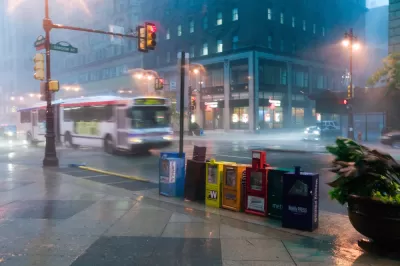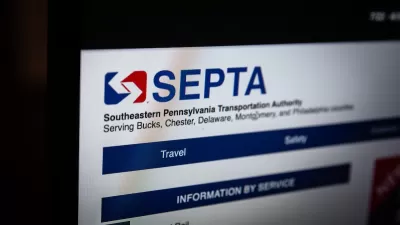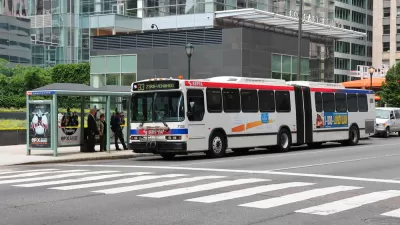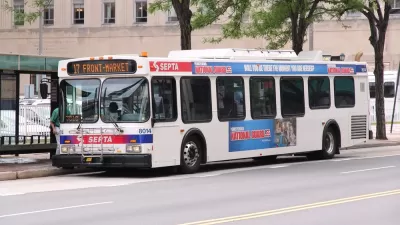A recent round of thunderstorms brought public transit operations in Philadelphia to a screeching halt.

"Thousands of SEPTA riders were stranded during Wednesday’s powerful thunderstorms. The storm triggered flash flooding and sent trees careening into catenary wires. Buses were diverted," reports Ryan Briggs.
SEPTA General Manager Jeff Kneuppel is quoted in the article saying the storms ranked in the "top five or ten" worst storms he'd encountered in 30 years at the transit agency.
Kneuppel also thinks storms are getting worse, a view shared by Franco Montalto, a Drexel engineering professor. "Most scientists concur that climate change is causing more severe and more frequent storms –– and transit agencies are struggling to keep up," writes Briggs.
The article includes details of SEPTA's work to make the transit system more resilient. "The agency is upgrading rain signals and placing them on stilts to enhance flood resistance. The agency is also moving away from its reliance on commercial power generation to minimize outages. Prepping rescue buses ahead of weather events is now a standard practice, and the agency is working to improve customer service to better notify customers of delays," according to Briggs.
FULL STORY: Climate change is messing with your commute, SEPTA says after storms halt trains

Manufactured Crisis: Losing the Nation’s Largest Source of Unsubsidized Affordable Housing
Manufactured housing communities have long been an affordable housing option for millions of people living in the U.S., but that affordability is disappearing rapidly. How did we get here?

Americans May Be Stuck — But Why?
Americans are moving a lot less than they once did, and that is a problem. While Yoni Applebaum, in his highly-publicized article Stuck, gets the reasons badly wrong, it's still important to ask: why are we moving so much less than before?

Using Old Oil and Gas Wells for Green Energy Storage
Penn State researchers have found that repurposing abandoned oil and gas wells for geothermal-assisted compressed-air energy storage can boost efficiency, reduce environmental risks, and support clean energy and job transitions.

Poorest NYC Neighborhoods Pay Price for Delivery Boom
The rise of ‘last-mile’ e-commerce warehouses — and their attendant truck traffic and air pollution — is disproportionately impacting the most historically disadvantaged parts of the city.

Greening Oakland’s School Grounds
With help from community partners like the Trust for Public Land, Oakland Unified School District is turning barren, asphalt-covered schoolyards into vibrant, green spaces that support outdoor learning, play, and student well-being.

California Governor Suspends CEQA Reviews for Utilities in Fire Areas
Utility restoration efforts in areas affected by the January wildfires in Los Angeles will be exempt from environmental regulations to speed up the rebuilding of essential infrastructure.
Urban Design for Planners 1: Software Tools
This six-course series explores essential urban design concepts using open source software and equips planners with the tools they need to participate fully in the urban design process.
Planning for Universal Design
Learn the tools for implementing Universal Design in planning regulations.
Heyer Gruel & Associates PA
City of Moreno Valley
Institute for Housing and Urban Development Studies (IHS)
City of Grandview
Harvard GSD Executive Education
Salt Lake City
NYU Wagner Graduate School of Public Service
City of Cambridge, Maryland





























